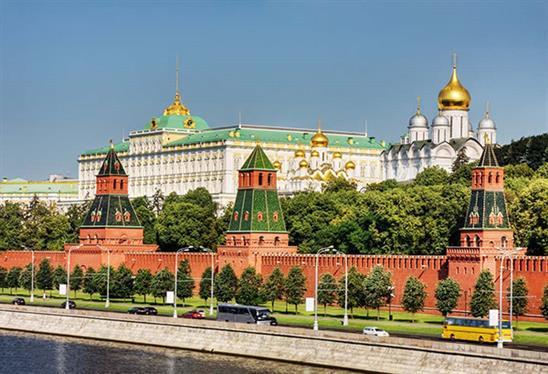The Soviet era significantly shaped Tula’s industrial landscape. Curious about what powered this city during that period? Let’s delve into the fascinating history of Tula’s industries under Soviet rule.
The Arsenal and Beyond: Tula’s Industrial Heart in the Soviet Period
Tula, a city steeped in history, wasn’t just famous for its samovars and gingerbread. During the Soviet era, it became a vital industrial hub, contributing significantly to the USSR’s economy. The city’s existing manufacturing prowess was further amplified, focusing on heavy industry and defense production. This transformation propelled Tula to new heights, shaping its identity and leaving a lasting legacy. What were the key sectors driving this growth? Let’s explore the most prominent industries that defined Tula’s Soviet era.
Metalworking and Arms Manufacturing: A Tradition Forged Anew
Tula’s long-standing tradition of metalworking found new purpose under Soviet rule. The Tula Arms Plant, already a renowned arms manufacturer, expanded significantly. It became a cornerstone of Soviet defense production, churning out a wide range of weapons, from small arms to heavy artillery. This focus on arms manufacturing solidified Tula’s position as a crucial center for the Soviet military-industrial complex. Think of the skilled workers, the constant hum of machinery, and the sheer output of this industrial powerhouse – a testament to Tula’s vital role in the Soviet Union.
 Tula Arms Plant during the Soviet Era: A bustling hub of arms production, showcasing the city's significant role in the USSR's military-industrial complex.
Tula Arms Plant during the Soviet Era: A bustling hub of arms production, showcasing the city's significant role in the USSR's military-industrial complex.
Machine Building: Powering Soviet Industry
Beyond arms, Tula’s machine-building sector also flourished. Factories like Tulamashzavod specialized in producing mining equipment, playing a crucial role in the USSR’s extraction industries. These machines were essential for extracting coal, iron ore, and other resources that fueled the Soviet economy. Can you imagine the impact of these machines on the vast mining operations across the Soviet Union? Tula’s contribution was undeniable, powering the nation’s industrial growth.
The Rise of the Chemical Industry: A New Frontier
The Soviet era also witnessed the emergence of a significant chemical industry in Tula. Factories produced fertilizers, pharmaceuticals, and other chemical products, contributing to both agriculture and healthcare. This diversification of Tula’s industrial base broadened its economic contribution and created new employment opportunities. This expansion reflects the Soviet Union’s push towards self-sufficiency in various sectors.
Beyond Heavy Industry: Diversification and Growth
While heavy industry dominated, other sectors also contributed to Tula’s economic landscape. These included:
The Food Industry: Sustaining a Growing Population
Tula’s traditional food industry, famous for its gingerbread (pryanik) and samovars, continued to thrive. These traditional crafts found new markets within the Soviet Union, contributing to the region’s economic diversity. The sweet aroma of gingerbread and the gleaming samovars remained integral to Tula’s identity, even amidst its industrial transformation.
Textiles and Clothing: Meeting Consumer Needs
The textile and clothing industries also expanded, catering to the growing consumer demands of the Soviet population. Factories produced fabrics, clothing, and other textile goods, playing a vital role in meeting everyday needs. This sector, though less prominent than heavy industry, played a significant role in providing essential goods for the people.
Construction: Building the Future
With industrial expansion came the need for infrastructure development. The construction industry boomed, building new factories, housing, and other infrastructure to support Tula’s growing population and industrial output. The city’s physical landscape was transformed as new structures rose to meet the demands of the Soviet era.
The Human Element: Life in Industrial Tula
What was life like for the people working in these industries? The rapid industrialization brought both opportunities and challenges. Workers migrated to Tula seeking employment, leading to a population boom. The city buzzed with activity, but also faced challenges in providing housing and other amenities for its rapidly growing population.
The Role of Women in Industry
Women played a significant role in Tula’s industries, working alongside men in factories and other workplaces. Their contribution was crucial to the Soviet Union’s industrial output and reflected the changing social dynamics of the era. Professor Irina Ivanova, a historian specializing in Soviet-era labor, notes, “Women’s participation in industrial production was essential to the Soviet economy, particularly in cities like Tula.”
Legacy of the Soviet Era: A Foundation for the Future
The Soviet era’s industrial development left an indelible mark on Tula. The city’s industrial base, established and expanded during this period, continues to be a significant part of its economy today. While some industries have declined, others have adapted and evolved, forming the foundation for Tula’s modern industrial landscape. “The industrial legacy of the Soviet era is deeply interwoven with Tula’s identity,” observes Dr. Dmitri Volkov, an economist specializing in regional development in Russia.
Conclusion
From metalworking and arms manufacturing to machine building and the chemical industry, Tula’s industrial landscape during the Soviet era was diverse and dynamic. These industries not only contributed significantly to the USSR’s economy but also shaped the city’s identity and the lives of its people. What aspects of Tula’s industrial history intrigue you the most? Share your thoughts and reflections in the comments below! Explore more fascinating stories and insights about Tula’s rich history on our website.











